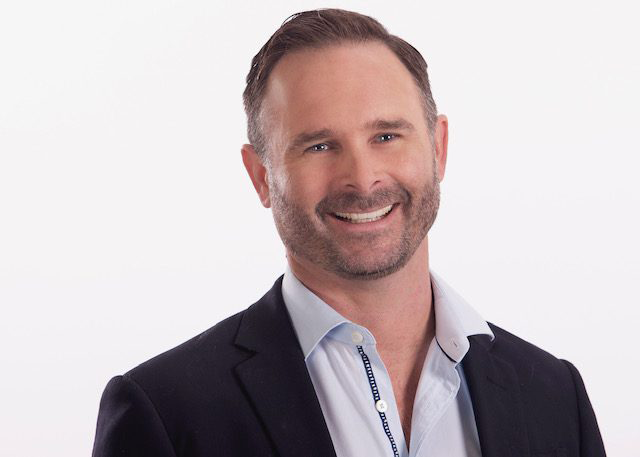Have you ever felt like something is holding you back, but you can’t quite put your finger on it? Blocking beliefs are those deeply ingrained negative thoughts or perceptions that prevent you from moving forward in your healing process. For trauma survivors, these beliefs can feel like insurmountable obstacles, obstructing everything from personal growth to emotional recovery.
Enter EMDR therapy (Eye Movement Desensitization and Reprocessing), a powerful, evidence-based approach that helps transform blocking beliefs into opportunities for growth and healing. This article will explore what blocking beliefs EMDR therapy entails, how it works, and why it can be a life-changing tool for trauma survivors.
What is EMDR Therapy?
EMDR therapy is a psychotherapy approach specifically designed to help people process and resolve traumatic memories in people with PTSD.1 Developed in the late 1980s, EMDR uses things like guided eye movements, tapping, or auditory cues, while focusing on specific traumatic memories.
The therapy aims to reprocess how these memories are stored in the brain so that they no longer cause emotional distress or fuel negative beliefs about yourself. Over time, EMDR helps people replace those “stuck” feelings with healthier, more adaptive ways of thinking.
Why is EMDR Effective for Trauma?
Trauma often causes intrusive memories, distorted self-perceptions, and intense emotional reactions that can feel overwhelming. EMDR works directly with the brain’s natural healing mechanisms, allowing you to revisit traumatic memories and transform the way they’re stored.2
Instead of being trapped in a feedback loop of shame or negative self-talk, you begin to view your experiences through a lens of self-compassion and clarity. This is where blocking beliefs come into play.
What Are Blocking Beliefs?
Blocking beliefs are negative or limiting thoughts that arise from trauma. For example:
- “I am unworthy of love.”
- “I can’t trust anyone.”
- “I’ll never be safe.”
These beliefs are often subconscious, but they affect how you see yourself, how you interact with others, and how you respond to future challenges.
Such deeply rooted beliefs stem from the brain’s survival mechanisms kicking into overdrive during traumatic events. While they may have served a purpose during the traumatic experience, like helping you protect yourself, they often outstay their welcome, keeping you stuck in old patterns of thinking.
Recognizing Blocking Beliefs
Even if you think you don’t experience blocking beliefs, it’s worth mentioning any distressing thoughts to your care team. Common blocking beliefs that don’t sound harmless but can wreak havoc include:3
- I don’t want to think about this problem anymore.
- If I solve my problems, I’ll lose a part of myself.
- This is boring to think about.
- I don’t care.
- I need to be perfect.
If you find yourself thinking along these lines, it’s likely that blocking beliefs are present. These beliefs can cause us to limit ourselves and hold us back from reaching our full potential. They also make it difficult for EMDR to be fully effective, since they serve as a protective mechanism. For instance, during EMDR, you might be asked to focus on a disturbing memory or emotion, but if you have a blocking belief such as “I need to be perfect,” you may resist fully engaging with the process and struggle to let go of negative thoughts and feelings.
How Does EMDR Eliminate Blocking Beliefs
To address these blocking beliefs, it’s important to identify them and challenge them. It’s also important to feel fully safe around your therapist. Once you feel fully safe and know that EMDR is meant to help you, you can begin to work through and eliminate your blocking beliefs.
A good EMDR therapist also knows to follow certain best practices for people with blocking beliefs. These include:
- Not applying pressure during your sessions
- Having patience and understanding
- Honoring your belief systems instead of fighting against them
- Letting you take the lead in your own healing process
- Creating a safe and supportive environment for you to work through your beliefs
- Encouraging self-care practices outside of therapy sessions
EMDR is not a quick fix, but it can be incredibly effective in helping individuals overcome their blocking beliefs. It’s important to keep an open mind and commit to the process, even though it may feel challenging at times.
Using EMDR as a Path to Healing
Blocking beliefs are more than just thoughts; they’re barriers that impact how you live and heal. Blocking beliefs EMDR therapy is a powerful tool that not only dismantles these blocks but also empowers you to replace them with beliefs that support your well-being. If you’re ready to take the first step in transforming your relationship with your trauma, reach out to us at SEE Purpose Recovery.
We provide Cognitive Behavioral Therapy (CBT), individual therapy, group therapy, 12-step programs, and trauma-focused addiction treatment in Bloomfield, IN, and beyond. We don’t see a person with addiction – we see someone who has experienced trauma and is seeking healing. With our compassionate and evidence-based approach, we can help you break free from the grip of trauma and addiction. Call us today to explore our detox, inpatient, and aftercare services, and find your purpose again.
FAQs
What is EMDR therapy?
Eye Movement Desensitization and Reprocessing (EMDR) therapy is a structured, evidence-based psychotherapy approach designed to help people process and recover from trauma and other distressing life experiences. EMDR uses techniques such as guided eye movements or tapping, to help the brain reprocess negative memories and beliefs. This helps reduce the emotional intensity tied to those memories and allows individuals to develop healthier perspectives. EMDR is often used to treat conditions like PTSD, anxiety, depression, and addiction.
What are blocking beliefs in EMDR therapy?
Blocking beliefs are negative core beliefs or internal thought patterns that interfere with the healing process during EMDR therapy. These beliefs often stem from past trauma or bad experiences and act as mental barriers, preventing people from fully processing their memories or accepting positive change. Examples of blocking beliefs might include thoughts like “I am unworthy of healing” or “I cannot get better.” Identifying and addressing these beliefs is a crucial step in maximizing the benefits of EMDR therapy.
How does EMDR therapy deal with blocking beliefs?
During EMDR, the therapist and client work together to identify and overcome blocking beliefs that may arise. Once these beliefs are identified, the therapist helps the client challenge and reframe them. For example, if a client feels “I don’t deserve to be happy,” the therapist might guide them to replace this belief with a healthier thought, such as “I am inherently worthy of happiness and healing.” By addressing these barriers, clients can progress more effectively through their treatment.
Can blocking beliefs cause resistance to EMDR therapy?
Yes, blocking beliefs can sometimes create resistance during EMDR therapy. They may manifest as doubts, fears, or feelings of being “stuck” during the therapeutic process. However, this resistance is a natural part of healing and can often provide valuable insight into the root causes of emotional pain. With the support of a skilled therapist, clients can work through these moments of resistance, shift unhelpful beliefs, and make steady progress toward recovery.
Is EMDR therapy safe for everyone?
EMDR therapy is considered safe and effective for most people, including those with PTSD and mild intellectual disabilities.4 However, as with any treatment, EMDR may not be suitable for everyone. It’s always best to consult with a licensed EMDR-trained therapist to determine whether this approach is right for you.
How long does EMDR therapy take?
The length of EMDR therapy varies depending on the individual’s needs, the complexity of their trauma, and the severity of their symptoms. Sessions can last for 50-90 minutes and take 1-3 months to complete, with some people seeing improvements in just a few sessions.5 But, if you have blocking beliefs, EMDR therapy might take longer. Your therapist will work with you to shorten your treatment time frame and get you on the road to healing.
References
- Blocking Beliefs Questionnaire for Children and Adolescents | Springer Publishing. (2025). Springerpub.com. https://connect.springerpub.com/content/book/978-0-8261-3802-6/back-matter/bmatterk
- Callus, E., Gallina, E., & Fernandez, I. (2024). EMDR: dispelling the false memory creation myth in response to Otgaar et al. (2022a). Frontiers in Psychology, 15. https://doi.org/10.3389/fpsyg.2024.1366137
- Shapiro, F. (2014). The role of eye movement desensitization and reprocessing (EMDR) therapy in medicine: Addressing the psychological and physical symptoms stemming from adverse life experience. The Permanente Journal, 18(1), 71–77. National Library of Medicine. https://doi.org/10.7812/tpp/13-098
- U.S. Department of Veterans Affairs. (2014). Eye Movement Desensitization and Reprocessing (EMDR) for PTSD. Va.gov. https://www.ptsd.va.gov/understand_tx/emdr.asp
- Verhagen, I., van der Heijden, R., de Jongh, A., Korzilius, H., Mevissen, L., & Didden, R. (2022). Safety, feasibility, and efficacy of EMDR therapy in adults with PTSD and mild intellectual disability or borderline intellectual functioning and mental health problems: A multiple baseline study. Journal of Mental Health Research in Intellectual Disabilities, 16(4), 1–23. https://doi.org/10.1080/19315864.2022.2148791




